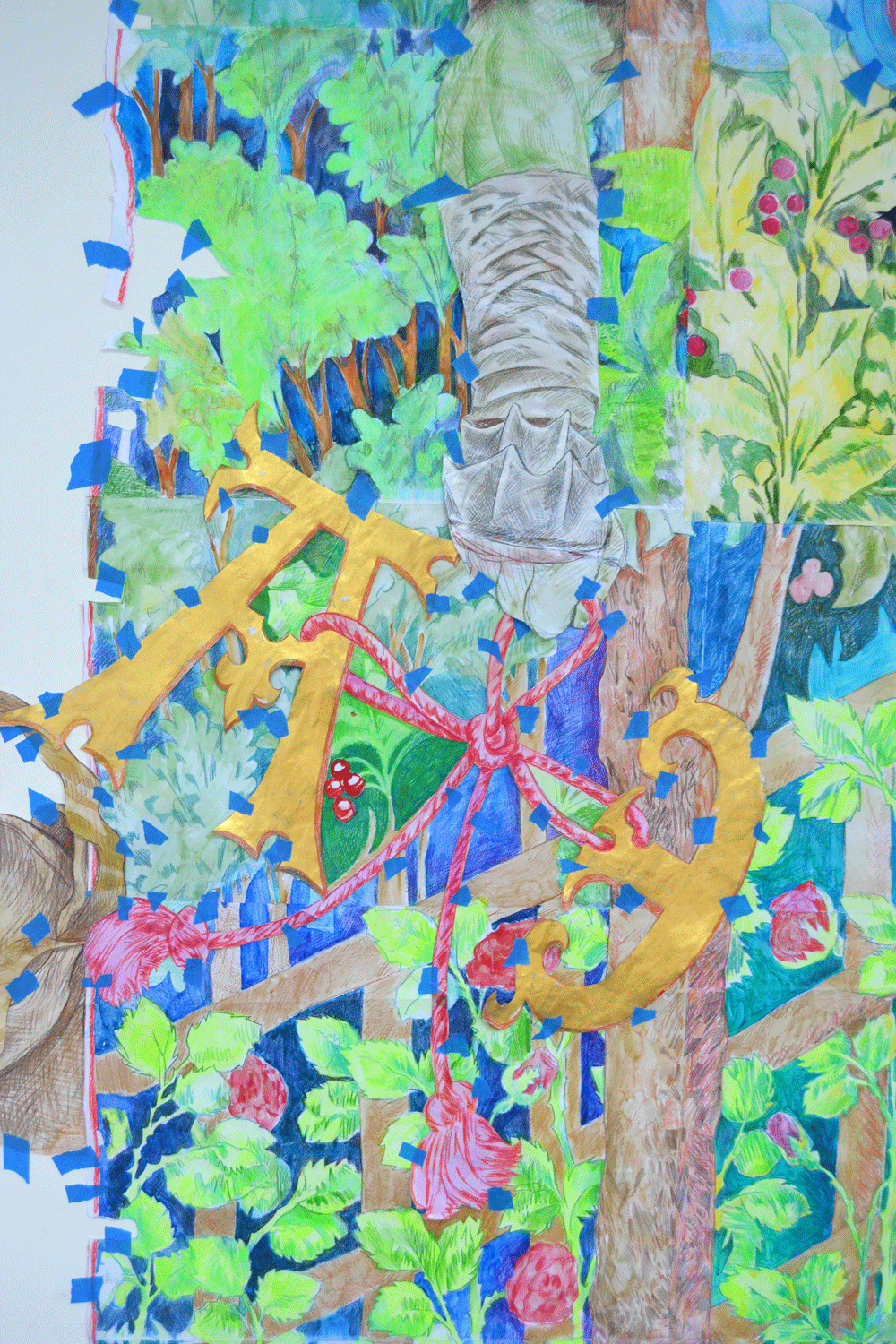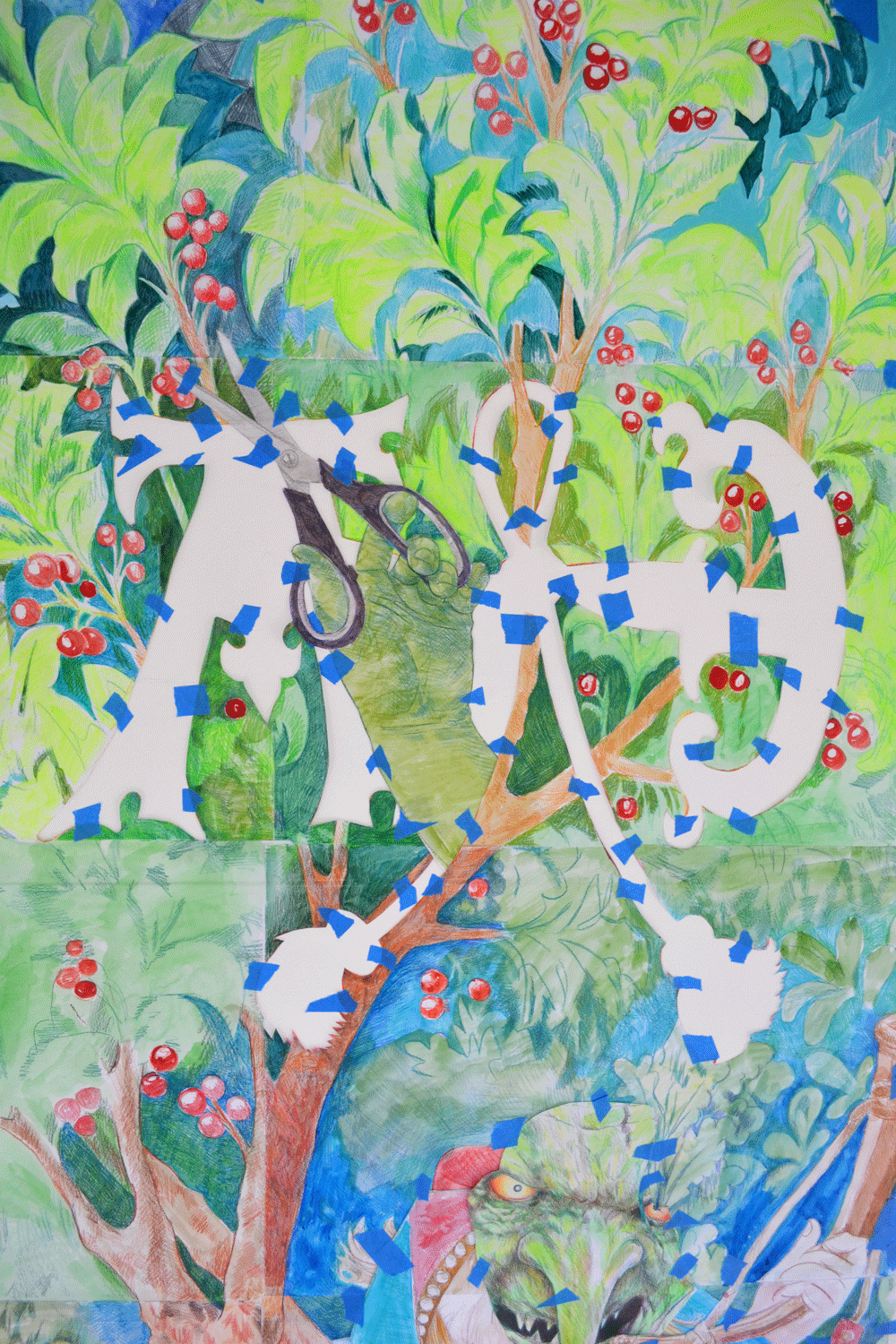
Sam Keogh
Unicorn Surrenders To A Maiden Cartoon
“Europe is a garden [...]. Everything works. It is the best combination of political freedom,
economic prosperity and social cohesion that humankind has been able to build [...]. The rest
of the world is not exactly a garden. Most of the rest of the world is a jungle, and the jungle
could invade the garden.”
European Diplomatic Academy: Opening remarks by High Representative Josep Borrell
at the inauguration of the pilot programme, 13/10/22
“Do you know how the Orcs first came into being? They were elves once, taken by the dark
powers, tortured and mutilated. A ruined and terrible form of life. And now... perfected.”
Saruman, Lord Of The Rings: The Fellowship of the Ring, 2001
The Unicorn Surrenders To A Maiden Cartoon inaugurates a new body of work – here an
installation of large-scale figurative collage – which critically engages depictions of pre-modern
Europe in both tapestries and mass media genre fantasy.
The work draws on The Unicorn Surrenders To A Maiden, a badly damaged 16th
Century Flemish tapestry which survives today in two fragments and hangs in the Met Cloisters as part
of a famous series of tapestries known as The Hunt of the Unicorn.
At the time of the French Revolution, the original tapestries were owned by the House of
Rochefoucauld who were members of the French nobility. Such artifacts were often destroyed
or expropriated in acts of iconoclasm against the Ancien Régime, which is likely why only
fragments of the tapestry remain. The surviving remnants are pockmarked by areas of damage
and repair, forming a material index of revolutionary events, each one a fraying, tearing and
patching up of Europe’s historical narrative.
In The Unicorn Surrenders to a Maiden Cartoon, the fantastic scenes depicted in the tapestry is
re-made as a ‘cartoon’, or 1:1 scale working drawing made for the production of a tapestry.
Here, the rarefied hortus conclusus of the Unicorn is invaded by monstrous entities. Their forms
are Frankensteined together with limbs, heads, faces and personal effects from an array of
sources. Some hands hold scissors or craft knives, suggesting that they have collaged
themselves together before cutting and pasting themselves into the world of the tapestries,
exploiting its sutured wounds as entry points. Limbs are multiplied and entangled, and faces are
made up from folded, torn, and recomposed layers of background and foreground. It's difficult to
tell where distinct bodies begin and end or whether they are destroying or building the world
they inhabit.



